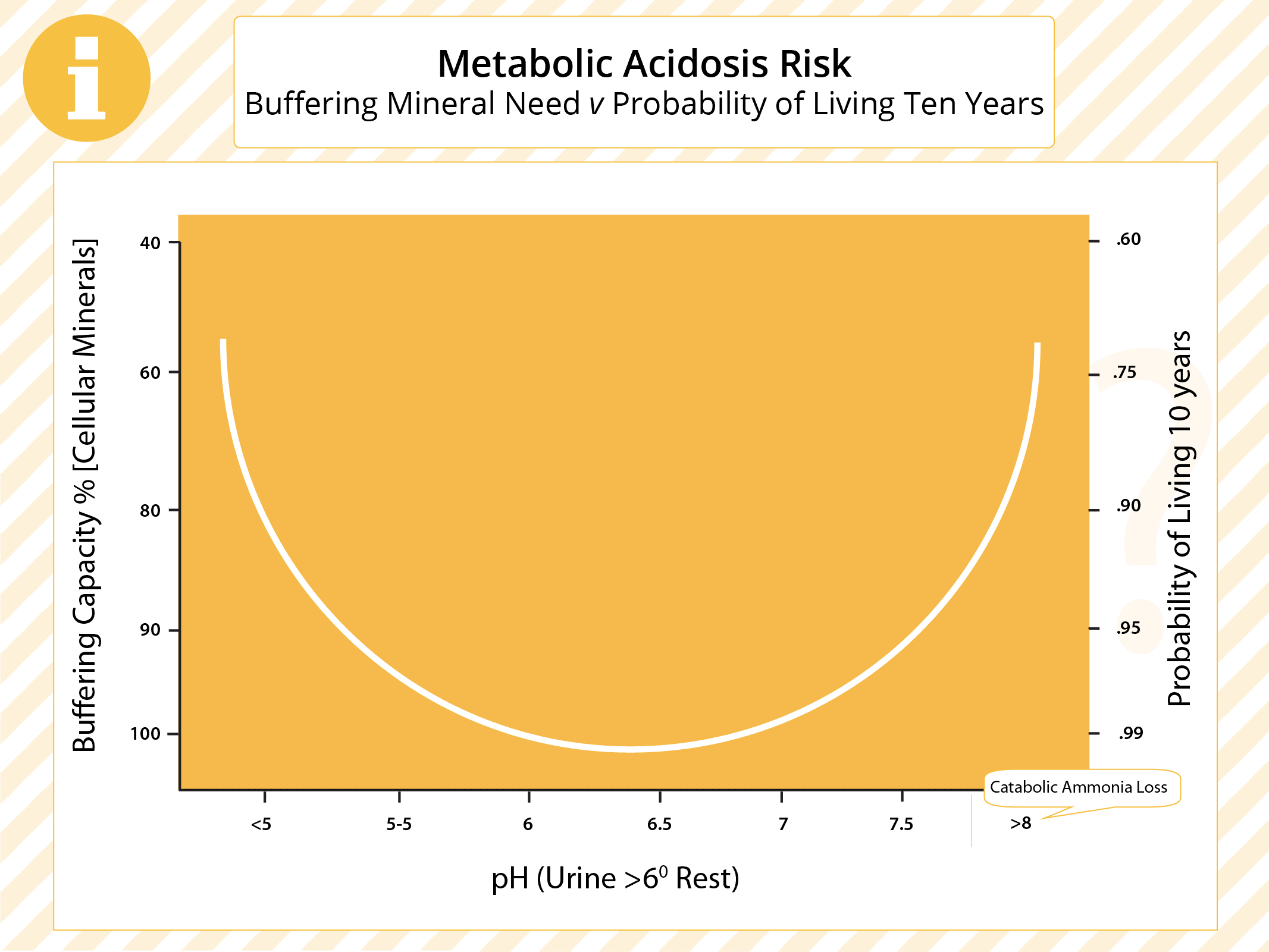The pH level of urine after 6 hours of rest reflects pH throughout the body. Levels below 6.5 indicate metabolic acidosis. Low pH also suggests mineral deficits, because minerals are pulled from bone and body fluid during metabolic acidosis to buffer and reduce acids and maintain pH within a health range.
Acid-alkaline balance is important. Tiny changes in pH have profound implications for cell metabolism. Life exists poised exquisitely just above the neutral point of 7.0. Levels of pH above 7.5 can indicate catabolic illness in which amino acids are used as energy sources.
Any unusual variation in urinary pH is usually reflected in the first morning urine. This calls for changes in diet and/or nutritional supplements to restore acid-alkaline balance. Simply checking the pH level each day provides ongoing monitoring to see whether pH has been corrected. (Click here for 1st AM Urine pH test protocol) This is an important aspect of biochemistry – so if there is an abnormality, that has to be monitored regularly.
Healthy values are urine pH in the 6.5-7.5 range.

Predictive Biomarkers
Hemoglobin A1c: Measure of efficiency of sugar/insulin/energy conversion. read more
High sensitivity C-Reactive Protein: Repair and inflammation immune status. read more
Cardiac Risk. read more
Test for immune memory/immune response to up to 491 items. read more
Assess mineral need and cell acid/alkaline balance. read more
Vitamin D level for cell communication status. read more
Oxidative stress and antioxidant status in cell envelope (membrane). read more
(8-hydroxy-2′-deoxyguanosine (8OHdG): Oxidative stress and antioxidant status in cell nucleus. read more
